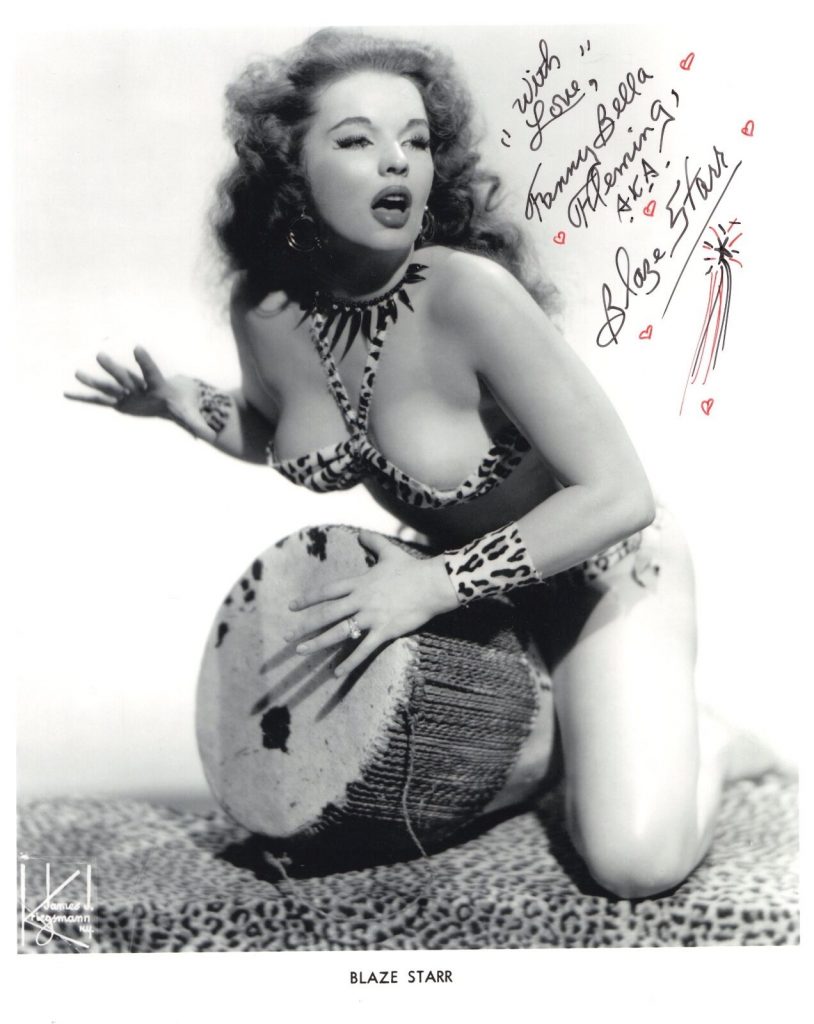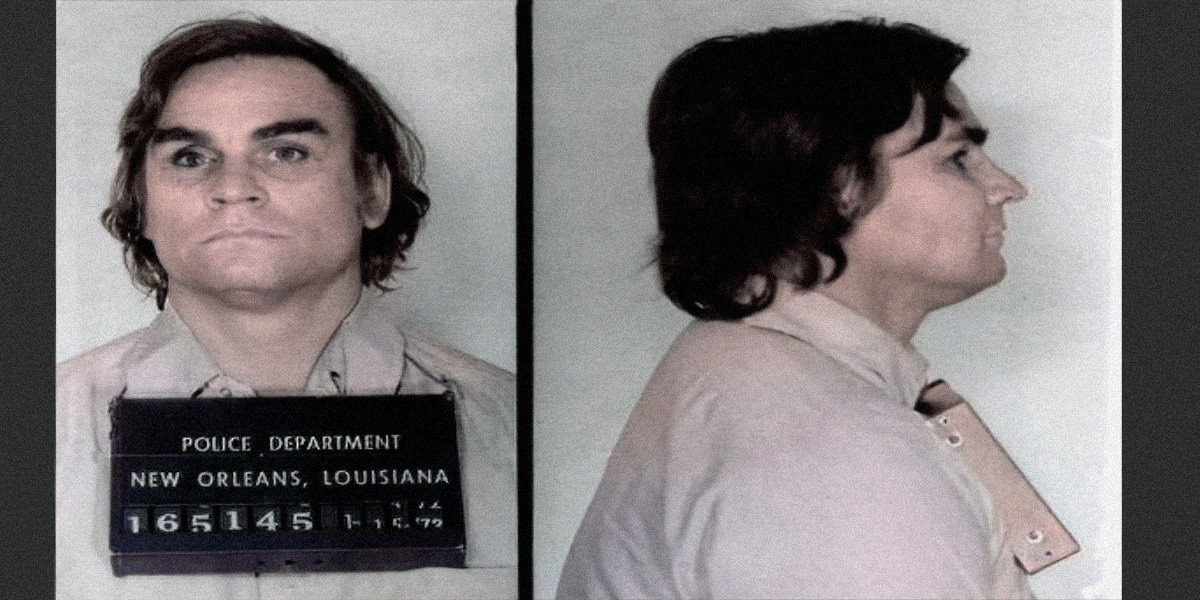Covington hitman began career as armed robber
On August 11, 1980, Roy L. Cooper, 51, brother of Covington Mayor Ernest Cooper, shot and killed his daughter’s former boyfriend, Charles Olan Thrash, 52, ending the convicted burglar and reputed Dixie Mafia hitman’s extensive criminal career.
In 1956, Charlie Thrash led Louisiana State Police on a thirty-mile chase, driving a stolen 1951 brown Pontiac. Racing from Bunkie, Louisiana to Alexandria, the 25-year-old crashed through police roadblocks in two parishes with patrol cars from three jurisdictions following bumper-to-bumper. The chase ended when the Pontiac T-boned a state police car blocking Highway 71.
Surrounded by police with guns drawn, Charlie stepped out of the driver’s side with his hands up. A second man climbed from the passenger side with his hands on his head. State Trooper Wilmer Beebe recognized the second man as 20-year-old William S. Cooley, a Pineville escapee from the Louisiana State Penitentiary at Angola.
Turning to Charlie, Trooper Beebe asked, “What about you? You been in trouble before?” To which Charlie shook his head, saying, “You name it. I’ve done it.”
The Louisiana State Police began their first search for Charlie Thrash in 1943, sending a bulletin statewide. After telling friends he would get a job as a bellhop in an Alexandria hotel, the 12-year-old vanished. His parents, Robert Bennie and Arah Thrash, found him hiding in a closet later that evening, having never left the family home on Louisiana Avenue in Slidell, a suburb of New Orleans.
The next time police looked for him, the charge was more serious. In October 1946, federal authorities turned the 17-year-old over to Vernon Parish authorities, charging him with breaking and entering. Charlie, they reported, entered the home of Warrant Officer E. P. Neill at 1619 Kings Road in Leesville, Louisiana, and stole a counterfeit $500 bill. He traded the bill for small denominations at a local bank, which passed the bill onto the various clearing houses until a bank in Dallas, Texas, discovered the fraud.
Sheriff W. C. Turner told The Leesville Leader that Warrant Officer Neill came in possession of the counterfeit bill overseas and had the souvenir displayed in a picture frame on the wall in his den.
Questioned by sheriff’s deputies on Christmas Day 1946, Charlie admitted robbing the house and taking the bill, but insisted he did not knowingly pass fake money. He thought the stolen currency was a real $500 bill.
Arrested as a juvenile, his sentence for that crime is unknown. However, five months after his eighteenth birthday, Judge W. A. Bahns granted Charles Olan Thrash clemency, provided he enlisted in the United States Army, where he served overseas in a Technical Service Unit in South Korea.
Discharged in 1952, Charlie caught a bus home to Louisiana. Soon after, Uncle Sam found him a job using skills he learned in the service. He would work as a Dental Technician, making dentures for a company in New Orleans. However, Charlie had a problem. Greyhound dropped him in Baton Rouge, eighty miles from his place of employment.
To solve the problem, Charlie loaded his service revolver and hijacked a car.
Two years later, in August 1954, paroled from Angola, Charlie found himself again in Baton Rouge without a ride and stole another car. In 1955, Louisiana State Police found him driving the same stolen car in Lake Charles.
In January 1956, Louisiana State Police booked Charlie, then 25-years-old, with reckless driving after his 1955 Jaguar Roadster sideswiped a 1948 Chevrolet truck near Alexandria. The prosecution estimated the truck’s damage at $400, but Judge Walter M. Hunter fined Charlie a hundred bucks and set him free.
Two weeks later, Charlie led state police on the thirty-mile chase referenced earlier. That night, Charlie and Willie Cooley were fleeing an armed robbery when Bunkie police identified the stolen car they drove.
Charlie and Willie robbed record shop owner L. J. Pichler two hours earlier, leaving the man tied and gagged. Pichler told investigators both men wore silk stockings over their faces and spoke Pig Latin throughout the robbery before leaving with $1,020 in cash and a Fats Domino album.
Police found the stockings and stolen goods in the car, along with a blue steel snub-nosed .38 revolver, a .410 shotgun, and an autographed photo of Bourbon Street dancer Blaze Starr.

The following April, a jury of twelve found Charles Thrash guilty of armed robbery and public bribery, sentencing him to nine years in Angola State Penitentiary, but in July 1957, Charlie escaped out a window while undergoing treatment at Charity Hospital in New Orleans.
The Federal Bureau of Investigation found him in New Orleans in 1958, wounding him in a gun battle before charging him with robbing a bank in Metairie and a jewelry store in Hammond. In 1959 and 1960, he petitioned the court for clemency, and in 1961, he escaped Angola again.
Charlie remained free until March 1962, when Iberville Parish Sheriff’s Deputy Lester Comeaux shot him in the foot. This happened one hour after Charlie robbed a Bayou Sorrel beer distributor of $1,600 and kidnapped a delivery driver to escape.
One month later, Charlie pled guilty by reason of insanity, and District Judge Fred LeBlanc tacked another fifty-eight years onto his earlier sentence. However, Charlie would soon start a riot at Angola Penitentiary and later be pardoned by a Louisiana governor before turning over a new leaf, trading his life of armed robbery and carjacking for another occupation, working as a hitman for the Dixie Mafia and the New Orleans mob.

